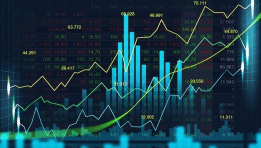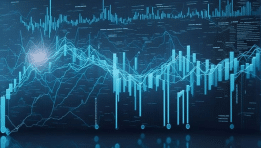In an era of surging inflation, currency devaluation, and rising geopolitical tensions, gold reserves are once again taking center stage in the global financial narrative. According to Benzinga’s 2025 report, the world’s leading economies are reinforcing their strategic gold holdings, not only as a hedge against volatility but also as a subtle assertion of geopolitical power. This is not merely a financial chart—it’s a map of global influence.
The U.S. Still Dominates, But for How Long?
With a staggering 8,133 metric tons of gold, the United States remains far ahead of any other country. This dominance is a legacy of the Bretton Woods era and reflects decades of trust in gold as a monetary anchor—even after the U.S. formally ended the gold standard in 1971. Today, gold serves Washington not just as an inflation hedge but also as a symbol of the dollar’s global reserve status. However, as other nations steadily increase their gold holdings, the long-standing U.S. advantage may begin to erode.
Europe’s Silent Insurance: Germany, Italy, and France
Germany (3,351 MT), Italy (2,451 MT), and France (2,437 MT) collectively hold more than 8,200 metric tons—comparable to the U.S. but distributed among three countries. These gold holdings act as both financial insurance and political leverage. Amid past eurozone crises and ongoing economic fragility, these countries have chosen to retain, rather than liquidate, their gold—a signal of commitment to long-term monetary stability. In many ways, gold is Europe’s insurance policy against future fragmentation or shocks to the euro.
Asia Is Catching Up: India, China, and Japan Make Their Move
Asia’s major powers are no longer content to watch from the sidelines. India (879 MT) treats gold as both a financial asset and a cultural cornerstone, deeply embedded in household and central bank portfolios. China, with 2,292 MT, has aggressively accumulated gold in recent years—part of a broader strategy to internationalize the yuan and reduce dependence on the U.S. dollar. Japan (845 MT), while more conservative, maintains gold reserves as part of its diversified foreign exchange holdings. Together, these three economies are shifting the center of monetary gravity eastward.
Small Countries, Big Reserves: Switzerland, Turkey, and the Netherlands
It’s not just the big powers. Switzerland (1,039 MT), Turkey (623 MT), and the Netherlands (612 MT) demonstrate that even medium-sized economies understand the value of gold. Switzerland’s reserves are a cornerstone of its status as a global banking hub. Turkey, facing repeated currency crises, sees gold as a stabilizing force and a way to restore domestic confidence. The Netherlands has actively repatriated much of its gold—an indication of growing mistrust in international custodians and a push toward monetary sovereignty.
Russia’s Strategic Gold Buffer
With 2,332 MT of gold, Russia ranks among the top holders globally. Facing Western sanctions and financial isolation, Moscow has pursued a clear policy of de-dollarization. Gold has become a critical asset in Russia’s effort to create a sanctions-proof economic structure. It functions as both a store of value and a geopolitical signal: Russia is ready to operate outside the Western-led financial order, and gold is its most reliable ally.
The Middle Tier: Taiwan, Poland, Portugal, and Uzbekistan
Several mid-sized economies are also stacking up their reserves. Taiwan (422 MT), Poland (515 MT), Portugal (382 MT), and Uzbekistan (367 MT) all have strategic reasons for increasing their gold holdings. Poland has made major purchases in recent years in response to regional instability. Taiwan, under constant threat from China, views gold as a buffer against potential economic coercion. Portugal and Uzbekistan use gold both for financial resilience and as part of broader efforts to build credibility with investors.
Gold vs. Bitcoin: The Original Safe Haven Still Reigns
While digital assets like Bitcoin have made headlines, central banks aren’t buying crypto—they’re doubling down on gold. The reason is simple: gold is a tangible, time-tested store of value with no counterparty risk. Unlike digital tokens that depend on network security and speculative flows, gold’s value endures through crises, wars, and regime changes. It’s not just a financial hedge; it’s a sovereign asset with global credibility.
Looking Ahead: A Return to Hard Assets?
If current trends persist—rising inflation, declining faith in fiat currencies, and the continued fragmentation of the global order—then gold is poised for a renaissance. The question is not whether countries hold gold, but whether they can use it effectively. In a post-dollar world, the nations with the strongest gold foundations may find themselves in an enviable position—ready to lead a new era of monetary realignment.
Comparison, examination, and analysis between investment houses
Leave your details, and an expert from our team will get back to you as soon as possible
* This article, in whole or in part, does not contain any promise of investment returns, nor does it constitute professional advice to make investments in any particular field.
To read more about the full disclaimer, click here- orshu
- •
- 8 Min Read
- •
- ago 2 hours
 The Rise of the Crypto World: A Technological Revolution That Changed the Face of Global Finance
The Rise of the Crypto World: A Technological Revolution That Changed the Face of Global Finance
The world of cryptocurrencies, once considered a niche and esoteric field a decade ago, has rapidly become one of the
- ago 2 hours
- •
- 8 Min Read
The world of cryptocurrencies, once considered a niche and esoteric field a decade ago, has rapidly become one of the
- orshu
- •
- 7 Min Read
- •
- ago 4 hours
 European Markets Close Strong: DAX and FTSE 100 Lead the Way
European Markets Close Strong: DAX and FTSE 100 Lead the Way
As the trading day in Europe draws to a close, a sense of cautious optimism prevails. Despite some mixed performance,
- ago 4 hours
- •
- 7 Min Read
As the trading day in Europe draws to a close, a sense of cautious optimism prevails. Despite some mixed performance,
- orshu
- •
- 9 Min Read
- •
- ago 4 hours
 Lemonade Publishes Q2 2025 Financial Results: Profitability, Innovation, and Risk Management at the Core of its Strategy
Lemonade Publishes Q2 2025 Financial Results: Profitability, Innovation, and Risk Management at the Core of its Strategy
Lemonade, Inc. (NYSE: LMND), the insurance technology company that combines artificial intelligence (AI) with innovative models, has published its financial
- ago 4 hours
- •
- 9 Min Read
Lemonade, Inc. (NYSE: LMND), the insurance technology company that combines artificial intelligence (AI) with innovative models, has published its financial
- orshu
- •
- 8 Min Read
- •
- ago 5 hours
 MercadoLibre Stock Falls After Q2 Earnings Miss Estimates Despite Strong Sales
MercadoLibre Stock Falls After Q2 Earnings Miss Estimates Despite Strong Sales
MercadoLibre (MELI) stock fell more than 5% in after-hours trading on Monday after the Latin American e-commerce company reported mixed second-quarter results,
- ago 5 hours
- •
- 8 Min Read
MercadoLibre (MELI) stock fell more than 5% in after-hours trading on Monday after the Latin American e-commerce company reported mixed second-quarter results,












